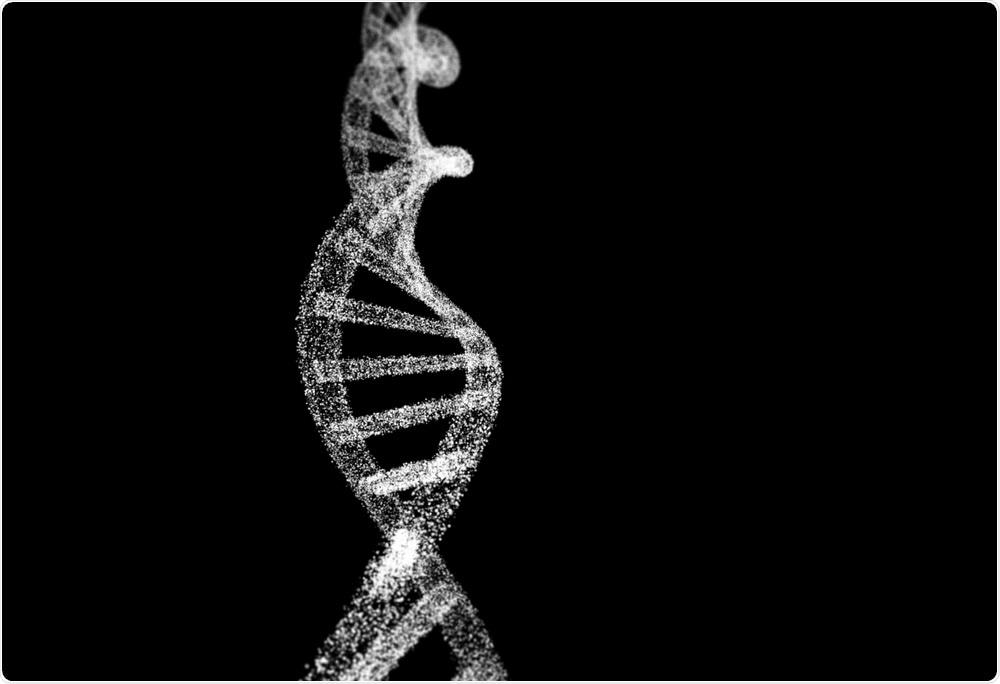
Modeling Non-Numerical Data in Systems Biology
 Thought LeadersDr. Eshan MitraPostdoctoral ResearcherLos Alamos National Laboratory
Thought LeadersDr. Eshan MitraPostdoctoral ResearcherLos Alamos National LaboratoryAn interview with Dr. Eshan Mitra, Ph.D., from Los Alamos National Laboratory, discussing the importance of computer models in biology and the development of a more accurate model of the RAF phosphorylation pathway.
Why are computer models used in systems biology?
We use computer models to study processes in biology that are challenging to directly observe with experiments. Our models focus on cell signaling pathways: sets of proteins in a cell that work together to perform a certain function, such as cell growth.
 Image Credit: Tampo / Shutterstock
Image Credit: Tampo / ShutterstockWe can use this type of model to understand and simulate how a cell would respond to a certain stimulus like a dose of a drug. We can understand how specific drugs operate at the level of individual cells, and also can consider new signaling proteins as potential drug targets.
How sophisticated are the current computer models used in drug development? Why is it important that new models are developed?
Current systems biology models try to describe how the concentrations of important signaling proteins in a cell change over time.
Typically the model can be written as a set of differential equations. These equations can be simulated on a computer to predict how a cell will respond to certain conditions, like a drug binding to a protein.
A challenge in building these models is choosing the associated numerical values, called model parameters. These could be quantities like the speed of a particular chemical reaction, or the concentration of an enzyme in the cell.
Often, these quantities are hard to measure directly. What we have to do instead is called parameter fitting: We look at some other protein in the model that was measured, and choose numerical values for the model so that the model output matches the experimental measurements.
Developing new and accurate models is important because it gives us predictive power. With an accurate model, we can look at a certain protein in the cell and ask, would this be a good drug target?If we blocked this protein’s activity, what would happen to the cell? But our predictions will only be as good as the model used to generate them.
 Image Credit: 123dartist / Shutterstock
Image Credit: 123dartist / ShutterstockWhat is the RAF signaling pathway, and how is it involved in cancer?
RAF is a protein involved in a signaling pathway for cell growth. When a receptor at the surface of a cell receives a signal to grow, that signal passes through RAF on the way to telling the cell to grow.
In cancer, RAF can become mutated, such that it always tells the cell to grow, without a signal. This causes the uncontrolled growth of a tumor. Mutated RAF is found in about 60% of melanoma cases, and has also been seen in some cases of colon cancer and lung cancer.
As a result, RAF is a popular target for cancer drugs. If a drug blocked the activity of RAF, that could slow down the growth of a tumor. But targeting RAF has been challenging: many drug candidates designed to inhibit RAF have instead caused an increase in RAF activity.
In our paper, we analyzed a model of RAF that shows how these RAF-targeting drugs can go wrong.
Please describe the algorithm you recently developed.
When we analyze models like the model of RAF signaling, we want the numerical values in the model – reaction speeds and protein concentrations – to be as accurate as possible.
Typically what people do is find a “fit” for those values using numerical data. For example, you might have an experiment where someone measured the quantity of active RAF at different drug doses. Then you can tune the numerical values in the model so that the model agrees with the data.
What our approach does differently is it lets us also use non-numerical data to fit the model. For example, an experiment might show that a drug decreases RAF signaling, without specifying by how much.
By including this kind of measurement, we can put more information into our model, and that makes the model more accurate.
The exciting finding is that with enough of these non-numerical measurements, we can actually get numerical values for reaction speeds in the model, and use those to make numerical predictions.
Do you think that this approach should be applied to all drug interaction studies?
I am excited about the possible applications for this approach. Non-numerical experiments tend to be easier to perform than numerical ones, and as a result, most published cell biology experiments are non-numerical.
So if you’re building a new cell signaling model to find out how your new drug will work, there’s a good chance that there is already a published experiment that generated non-numerical data about what you’re looking at.
If so, then our approach makes it possible to include that information in the model. That makes for a more accurate model that is more likely to give you good predictions about the drug.
What are the next steps for your research?
I want to make this approach accessible to other researchers. My next step is developing an open-source computer program that runs the approach automatically.
The program reads in a cell signaling model, along with both numerical and non-numerical data, and runs an optimization algorithm to tune the model to agree with the data.
My hope is that this program will enable other biologists to apply our approach toward the next exciting medical discovery.
Where can readers find more information?
- Using both qualitative and quantitative data in parameter identification for systems biology models.
- Other research papers by Dr. Eshan Mitra.
About Dr. Eshan Mitra
 Dr. Eshan Mitra is a postdoctoral researcher at Los Alamos National Laboratory. Eshan earned his Ph.D. at Cornell University, where he studied the molecular mechanisms behind allergic responses.
Dr. Eshan Mitra is a postdoctoral researcher at Los Alamos National Laboratory. Eshan earned his Ph.D. at Cornell University, where he studied the molecular mechanisms behind allergic responses.His current work focuses on methods and software development for systems biology. Eshan is developing tools for simulating and analyzing models of cell signaling networks.























.png)











No hay comentarios:
Publicar un comentario